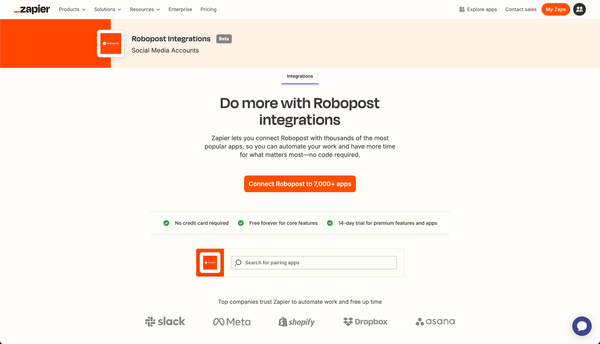From Followers to Customers: Converting Engagement into Sales
Unlock sales from social engagement with targeted strategies for audience understanding and personalized lead conversion.

Businesses have a chance to turn followers into loyal customers. Turning engagement into sales is complex and needs a good understanding of your audience and smart communication. This article explains the key steps and strategies for turning social media engagement into actual sales. It emphasizes the need for personalized interactions and content that appeals to potential customers. By using data from analytics, direct messages, and social listening, businesses can create a smooth process to move from engaging followers to making sales.
Key Takeaways
- Knowing your audience’s age, interests, and habits is essential for creating content and strategies that boost sales.
- Successful examples show that a well-planned approach to engaging leads can increase conversion rates and sales.
- Regularly updating your engagement tactics and content strategy, based on data and feedback, is key to keeping sales conversions successful.
Understanding Your Audience: The Foundation of Conversion
Demographics, Interests, and Behaviors: Key Audience Insights
Knowing your target audience is the most important factor for a successful conversion strategy. Market research helps you understand what your audience likes, how they behave, and what motivates them. This can be done through surveys, focus groups, or interviews to create detailed profiles of your ideal customers.
You need to keep updating your strategy based on new trends and changing needs. Regularly ask your customers for feedback, check search engine queries, and read industry news. When new interests come up, adjust your messaging and content to stay relevant and engaging.
If you don’t engage effectively at key stages, you might miss opportunities. Customize your content and messaging to fit the specific needs and interests of different audience segments, and use data to improve your strategies and increase conversion rates.
Customizing Content and Messaging for Maximum Impact
To turn engagement into sales effectively, personalization is crucial. By dividing your audience into groups based on their demographics, preferences, or behavior, you can create messages that speak directly to them. For example, an online clothing store might divide customers by their shopping habits and past purchases, then send customized emails with outfit suggestions based on what they've looked at before.
Adding specific details to your messages can greatly increase engagement and sales. For instance, if someone is interested in marathon running, you might send them an email with training plans tailored to their city. This way, the communication is not only personalized but also directly related to their interests.
Writing persuasive copy is also important. Instead of using generic messages, focus on highlighting specific benefits and making calls to action that directly address what your audience wants and needs.
Using Analytics to Monitor Engagement and Refine Strategies
To make the most of social media engagement, it's important to track and analyze how users interact with your content.
By keeping an eye on metrics like click-through and conversion rates, you can see which types of content are best at generating sales. This helps you make decisions based on data, leading to more effective engagement strategies.
For example, you might find that some posts are particularly good at moving followers towards making a purchase. To understand how well your sales process is working, check:
- How much traffic you get at each stage
- How many leads convert at different stages
- Engagement on important pages and content
- How many sales and revenue are generated
Keep up with new trends and adjust your messaging and content to fit changing customer needs and interests. This way, your engagement efforts will always match what your audience wants and does.
Direct Messaging: Personalizing the Path to Purchase
The Power of One-on-One Conversations
Personal interactions are important for turning followers into customers. By having individual conversations, businesses can show they understand each person’s needs and offer solutions that fit those needs.
- Get to know the customer’s specific problems and goals.
- Provide personalized advice and product suggestions.
- Keep in touch with custom messages to build the relationship.
Using personalization effectively can turn simple interactions into valuable connections that lead to sales. It’s about building trust and showing expertise, making each conversation a step towards making a sale.
Customizing Offers and Follow-Ups for Higher Conversion Rates
To turn engagement into sales, it's important to customize your offers and follow-ups to each lead. This means making sure your messages are relevant and address their specific needs and interests. For example, an online clothing store might send personalized emails with outfit suggestions based on what the customer has looked at, which can greatly increase click-through rates and sales.
Effective follow-up goes beyond just sending emails. You need to understand where the lead is in the sales process and their past interactions with your brand. Here are some tips for successful follow-ups:
- Know the lead’s needs and preferences.
- Write persuasive messages that highlight what’s valuable to them.
- Include clear actions you want them to take.
- Make regular offers to keep them engaged.
The aim is to add value at each step and guide the lead closer to making a purchase, while keeping a personal touch.
Measuring the Impact of Personalized Engagement
To see how well personalized engagement strategies are working, you need to measure their impact on sales and customer behavior. Tracking key performance indicators (KPIs) helps you understand how effective your personalized messages and offers are.
Important metrics to track include conversion rates, click-through rates, and average order value. These numbers show how well your personalized engagement is connecting with your audience. Here's a simple table illustrating potential KPI improvements:
KPI | Before Personalization | After Personalization |
|---|---|---|
Conversion Rate | 2% | 5% |
Click-Through Rate | 10% | 30% |
Average Order Value | $50 | $75 |
By looking at these metrics, businesses can improve their strategies. For example, if personalized emails are getting more clicks but not leading to more sales, you might need to improve the landing page where people are directed.
Social Listening and Lead Generation: A Symbiotic Relationship
Harnessing Social Media Insights for Lead Discovery
Social listening is an essential tool for generating leads today. By keeping an eye on social media for mentions of your brand, products, or industry topics, you can find potential leads who are already discussing things related to what you offer. These people are great targets for reaching out.
Here’s how to use social listening effectively:
- Reply to comments or mentions with personalized messages.
- Share relevant content and offer exclusive previews.
Adjusting your content and engagement strategies based on what you learn from social media can help create more effective sales opportunities. Regularly reviewing and tweaking your approach will help you stay in tune with your audience and improve conversion rates over time.
The Importance of Active Social Listening in Identifying Leads
Active social listening is essential for modern marketers. By keeping track of online conversations, businesses can find valuable information about potential leads. This involves more than just watching; it means strategically engaging with people who are already talking about topics related to your industry or showing interest in your field.
Here’s how to use social listening effectively:
- Monitor social media platforms for mentions of your brand and relevant discussions.
- Spot patterns and trends that show potential leads’ interests and needs.
- Connect with users by providing useful information and answering their questions.
Understanding online conversations can help you spot opportunities you might otherwise miss. It’s about being present and ready to introduce your brand to people who are already talking about relevant topics.
Turning Online Conversations into Sales Opportunities
Turning online conversations into sales opportunities means engaging with users in a way that helps qualify them as potential leads. Responding to questions and providing valuable information shows how your product or service can solve their problems, setting up a chance for a sale. Personalized communication through direct messaging is important; it's about building relationships rather than pushing for immediate sales. By focusing on helpful interactions and understanding what users need, you can naturally guide the conversation to show how your products can benefit them.
Engaging with leads in real-time is also powerful. Automation can notify you of key actions or buying signals, allowing you to follow up quickly and effectively. This proactive approach can shorten the sales process and increase the chances of making a sale. To turn social media into a sales tool, you need to deeply understand your audience and stay committed to genuine engagement.
Conclusion
When turning followers into customers on social media, it's important to remember that success isn't just about numbers—it's about building real relationships. You need to understand your audience, engage with them genuinely, and add value with every interaction. Personalized engagement and adapting to feedback are crucial for converting social media interactions into actual sales. By focusing on these factors, businesses can turn social media activity into real sales, grow their business, and build strong customer relationships. The real measure of success is not just how much people interact with your posts, but how well you turn that interaction into loyal customers and more revenue.
